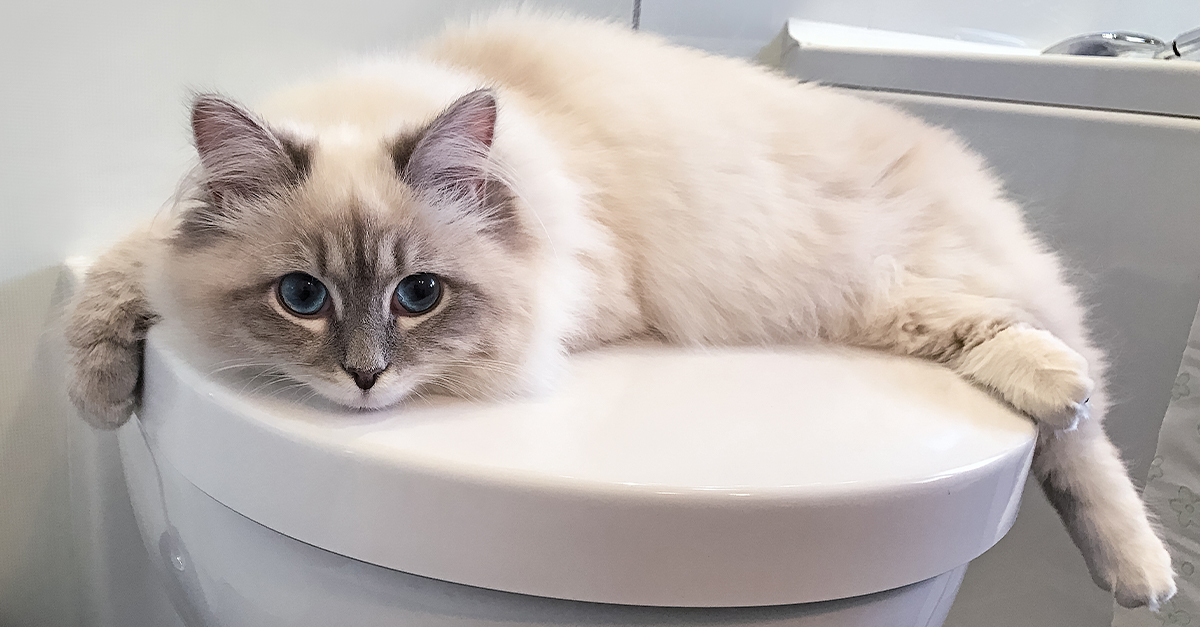Avoid Clogs and Damage: Never Flush Cat Poop Down Your Toilet - Professional Recommendations
Avoid Clogs and Damage: Never Flush Cat Poop Down Your Toilet - Professional Recommendations
Blog Article
The content following next in relation to How to Dispose of Cat Poop and Litter Without Plastic Bags is quite informative. You should keep reading.

Introduction
As feline owners, it's necessary to bear in mind how we deal with our feline good friends' waste. While it might seem hassle-free to flush pet cat poop down the bathroom, this method can have destructive consequences for both the setting and human health and wellness.
Environmental Impact
Purging pet cat poop introduces damaging virus and bloodsuckers right into the water, posturing a substantial danger to water environments. These pollutants can negatively influence aquatic life and compromise water quality.
Health Risks
Along with environmental concerns, flushing feline waste can also posture health and wellness risks to human beings. Cat feces might include Toxoplasma gondii, a bloodsucker that can trigger toxoplasmosis-- a possibly serious ailment, especially for expectant women and people with damaged immune systems.
Alternatives to Flushing
The good news is, there are safer and a lot more liable ways to take care of pet cat poop. Take into consideration the complying with choices:
1. Scoop and Dispose in Trash
The most common approach of getting rid of pet cat poop is to scoop it right into a naturally degradable bag and throw it in the garbage. Make sure to use a committed trash scoop and get rid of the waste promptly.
2. Use Biodegradable Litter
Select naturally degradable pet cat litter made from products such as corn or wheat. These litters are eco-friendly and can be safely dealt with in the trash.
3. Bury in the Yard
If you have a backyard, think about burying feline waste in a marked location far from veggie gardens and water sources. Make certain to dig deep adequate to prevent contamination of groundwater.
4. Set Up a Pet Waste Disposal System
Invest in a pet dog waste disposal system especially created for cat waste. These systems utilize enzymes to break down the waste, minimizing smell and ecological influence.
Final thought
Liable family pet possession extends past providing food and shelter-- it also entails proper waste monitoring. By refraining from purging cat poop down the bathroom and selecting alternate disposal methods, we can lessen our ecological footprint and safeguard human health.
Why Can’t I Flush Cat Poop?
It Spreads a Parasite
Cats are frequently infected with a parasite called toxoplasma gondii. The parasite causes an infection called toxoplasmosis. It is usually harmless to cats. The parasite only uses cat poop as a host for its eggs. Otherwise, the cat’s immune system usually keeps the infection at low enough levels to maintain its own health. But it does not stop the develop of eggs. These eggs are tiny and surprisingly tough. They may survive for a year before they begin to grow. But that’s the problem.
Our wastewater system is not designed to deal with toxoplasmosis eggs. Instead, most eggs will flush from your toilet into sewers and wastewater management plants. After the sewage is treated for many other harmful things in it, it is typically released into local rivers, lakes, or oceans. Here, the toxoplasmosis eggs can find new hosts, including starfish, crabs, otters, and many other wildlife. For many, this is a significant risk to their health. Toxoplasmosis can also end up infecting water sources that are important for agriculture, which means our deer, pigs, and sheep can get infected too.
Is There Risk to Humans?
There can be a risk to human life from flushing cat poop down the toilet. If you do so, the parasites from your cat’s poop can end up in shellfish, game animals, or livestock. If this meat is then served raw or undercooked, the people who eat it can get sick.
In fact, according to the CDC, 40 million people in the United States are infected with toxoplasma gondii. They get it from exposure to infected seafood, or from some kind of cat poop contamination, like drinking from a stream that is contaminated or touching anything that has come into contact with cat poop. That includes just cleaning a cat litter box.
Most people who get infected with these parasites will not develop any symptoms. However, for pregnant women or for those with compromised immune systems, the parasite can cause severe health problems.
How to Handle Cat Poop
The best way to handle cat poop is actually to clean the box more often. The eggs that the parasite sheds will not become active until one to five days after the cat poops. That means that if you clean daily, you’re much less likely to come into direct contact with infectious eggs.
That said, always dispose of cat poop in the garbage and not down the toilet. Wash your hands before and after you clean the litter box, and bring the bag of poop right outside to your garbage bins.
https://trenchlesssolutionsusa.com/why-cant-i-flush-cat-poop/

I am very fascinated with How to Dispose of Cat Poop and Litter Without Plastic Bags and I really hope you appreciated our blog post. Do you know about someone else who is involved in the subject? Do not hesitate to promote it. Thanks a lot for taking the time to read it.
Call Today Report this page